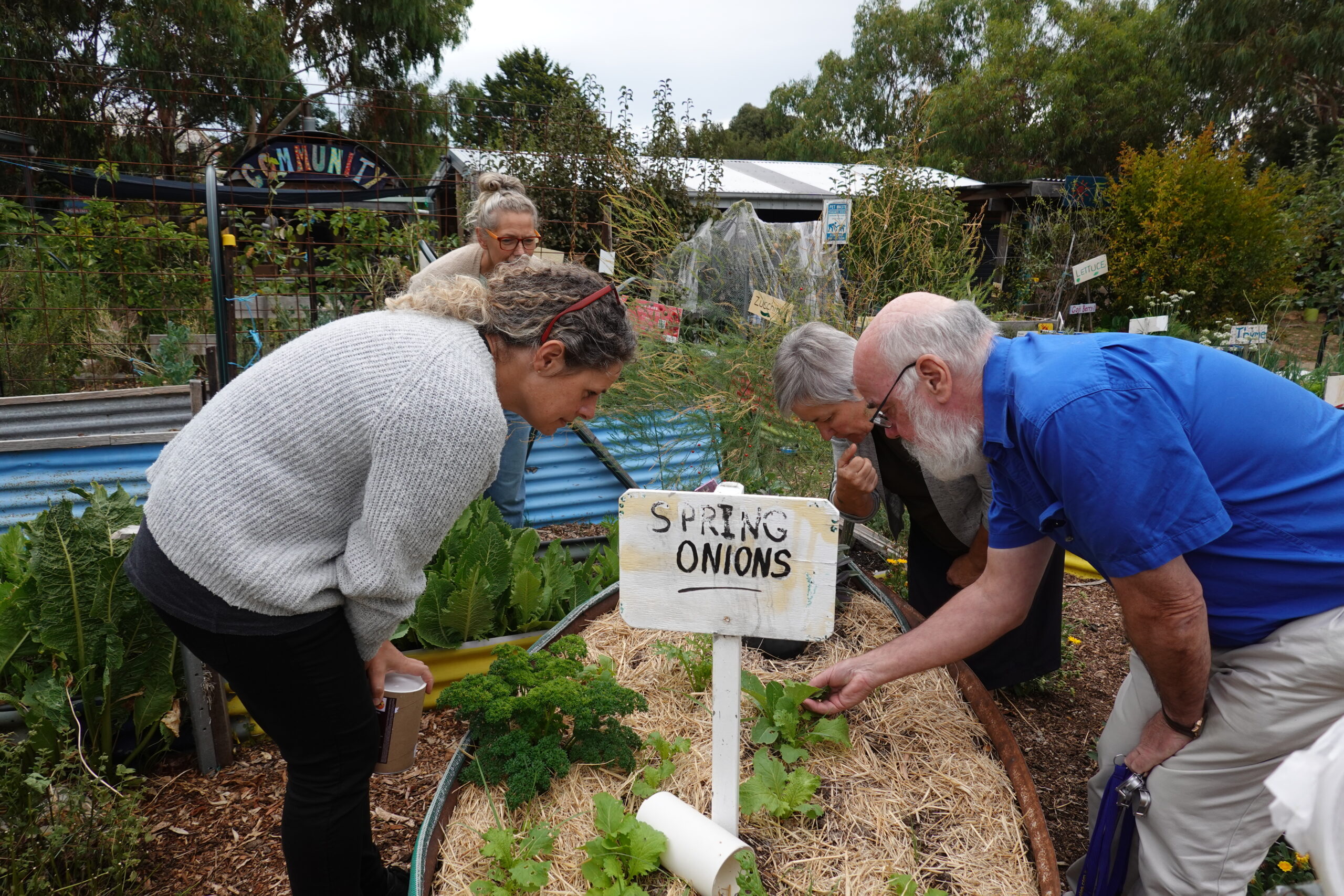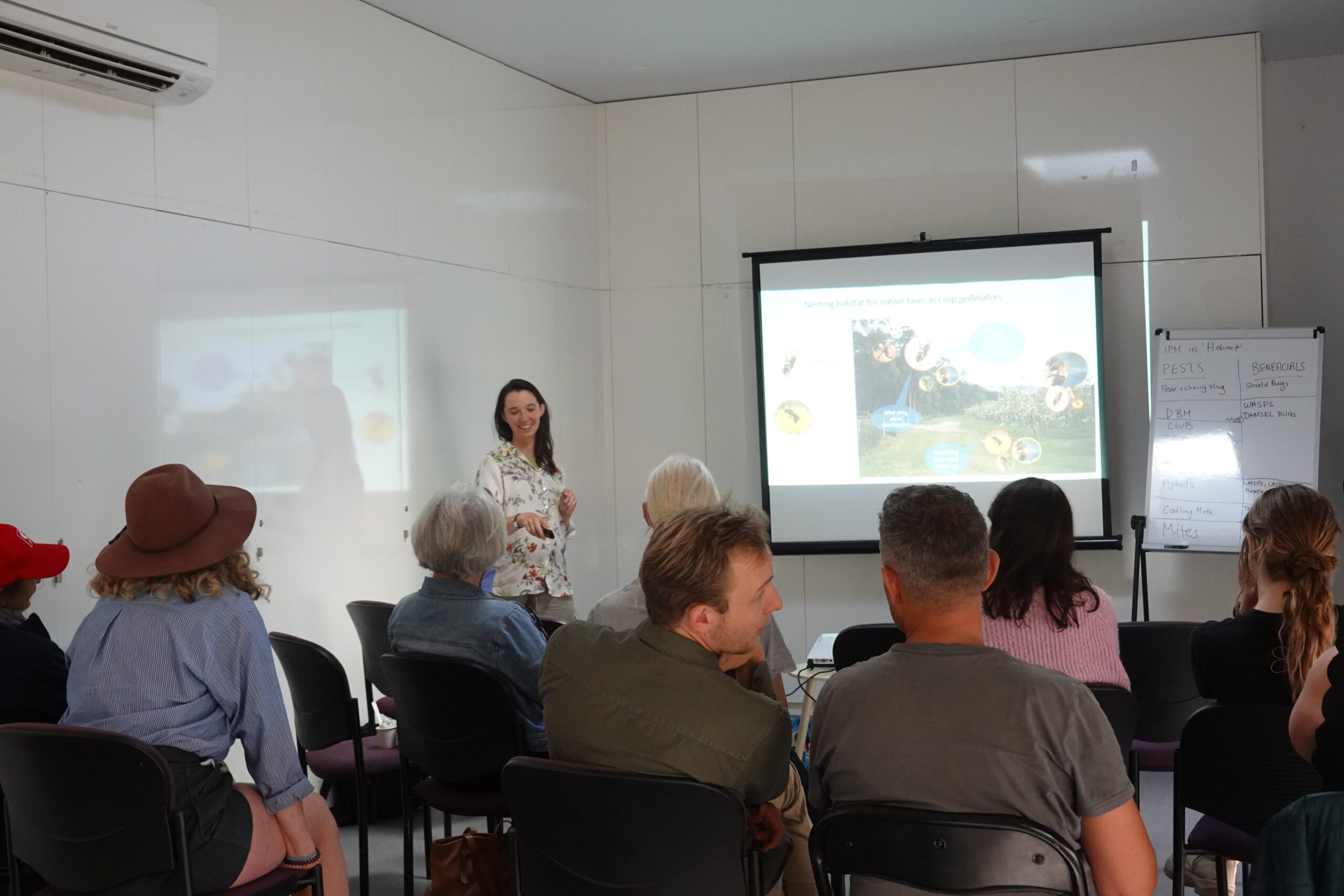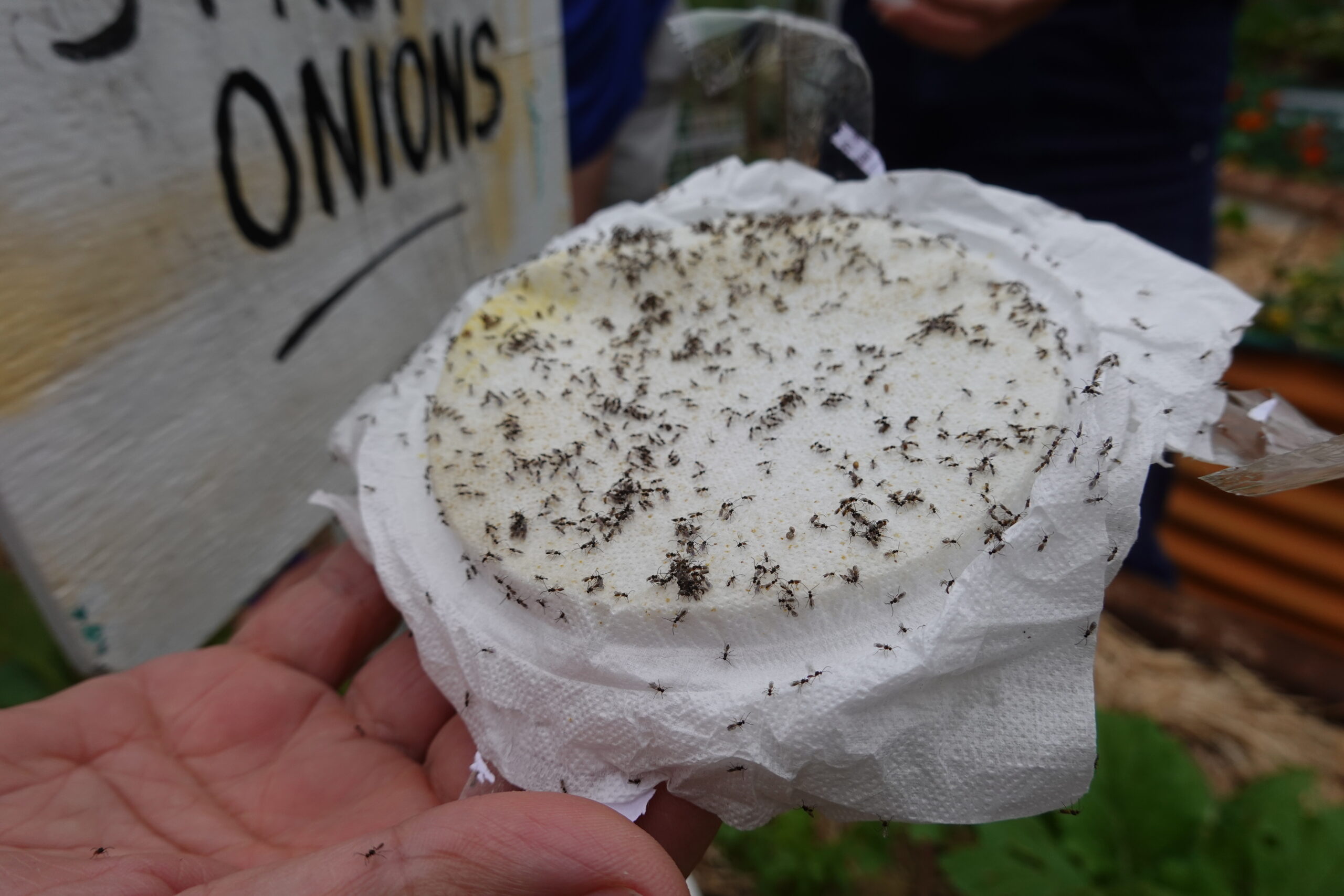Across two days in March 2025, Dr Yolanda Hanusch – Sustainable Agriculture Facilitator and Senior Project Officer from our Land Program team, ran three Integrated Pest and Pollinator Management (IPPM) workshops. Funded by the Tasmanian Government’s Community Climate Change Action Grants, the workshops were co-delivered by Yolanda alongside IPPM experts Paul Horne and Rebecca Addison.
So, how do you sustain the good bugs? It’s an approach that calls for a suite of tools and approaches.
First, roll out the welcome mat for beneficial insects so they can help you control pests. Beneficial insects include predatory beetles and mites that live in your soil. Flying predatory insects include lacewings, hoverflies, ladybugs and parasitising wasps. You can encourage these insects by leaving decaying materials including dead grass, mulch or compost on the ground, and growing different flowering plants (particularly ‘umbel’ flowers such as carrot or coriander, and daisy-like flowers).
Secondly, apply techniques that will limit the impact of pests on your crops. This includes encouraging beneficial insects, promoting healthy soils (stronger plants are more likely to withstand pests) or physical barriers such as insect netting to protect brassicas from cabbage butterflies.
Finally – chemical control as a last resort (including organic insecticides). Workshop attendees learned about the careful use of chemicals in pest control including how and when to use them. Broad spectrum insecticides including natural pyrethrum should always be avoided as they affect all insects – both beneficial and unwelcome. If you use BT sprays (Dipel, Xentari), which are a biological spray, check use by date, use a sticking agent with the product and spray in late afternoon to avoid UV radiation.
Yolanda also taught the three workshop groups about the vast assemblage of insects that contribute to the pollination of different vegetable and fruit crops, and how to encourage both introduced and native bees – alongside the many other different beneficial insects – that visit our gardens. If you’d like to learn more and think about what changes you could start to apply to your own home garden, check out our webinar on flower feeding insects.



